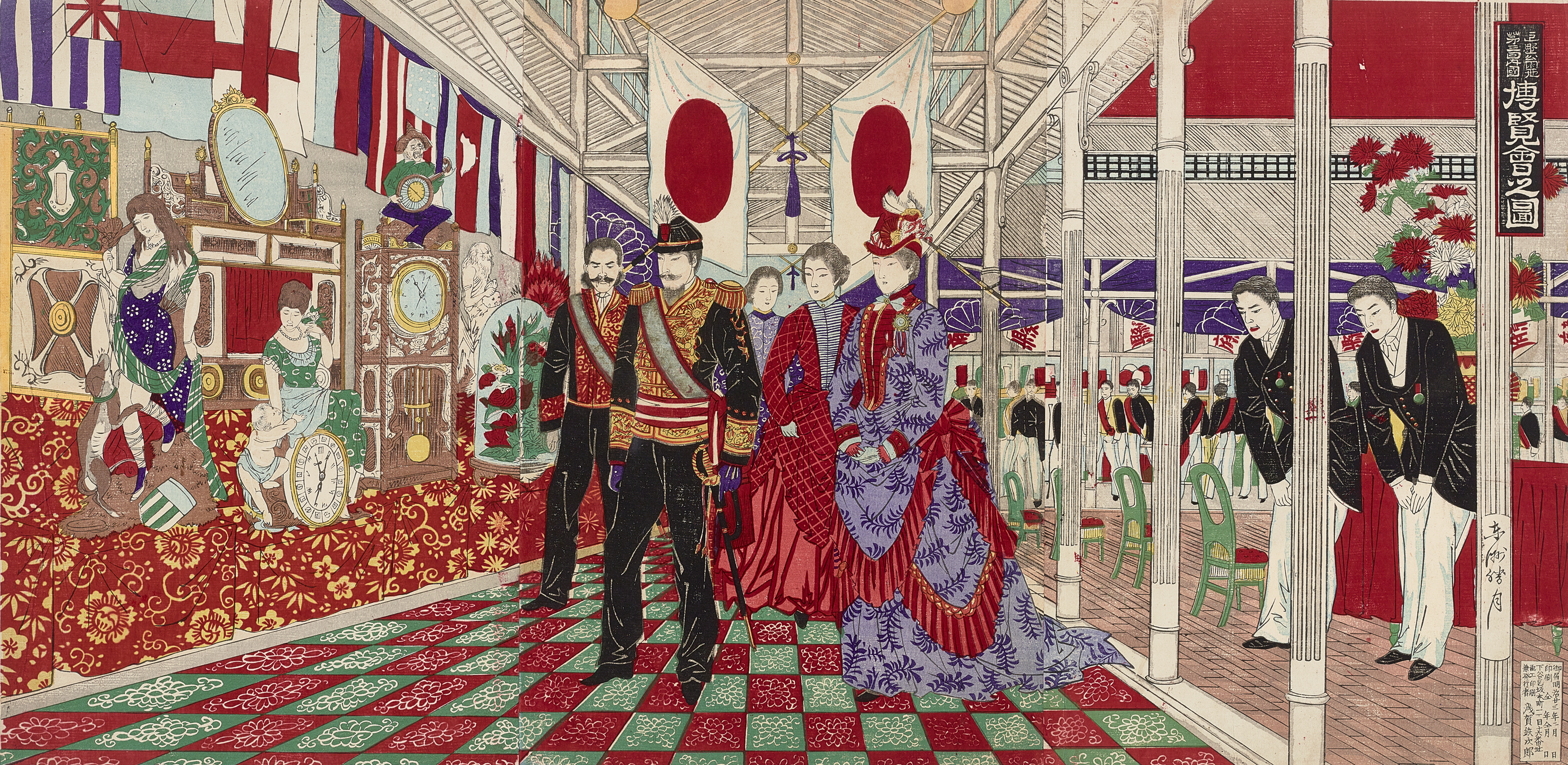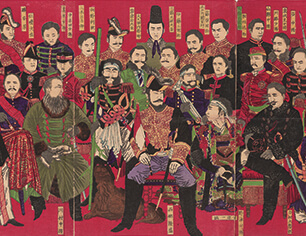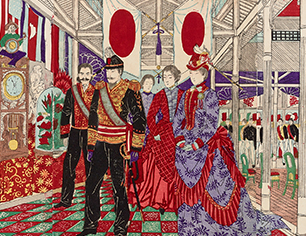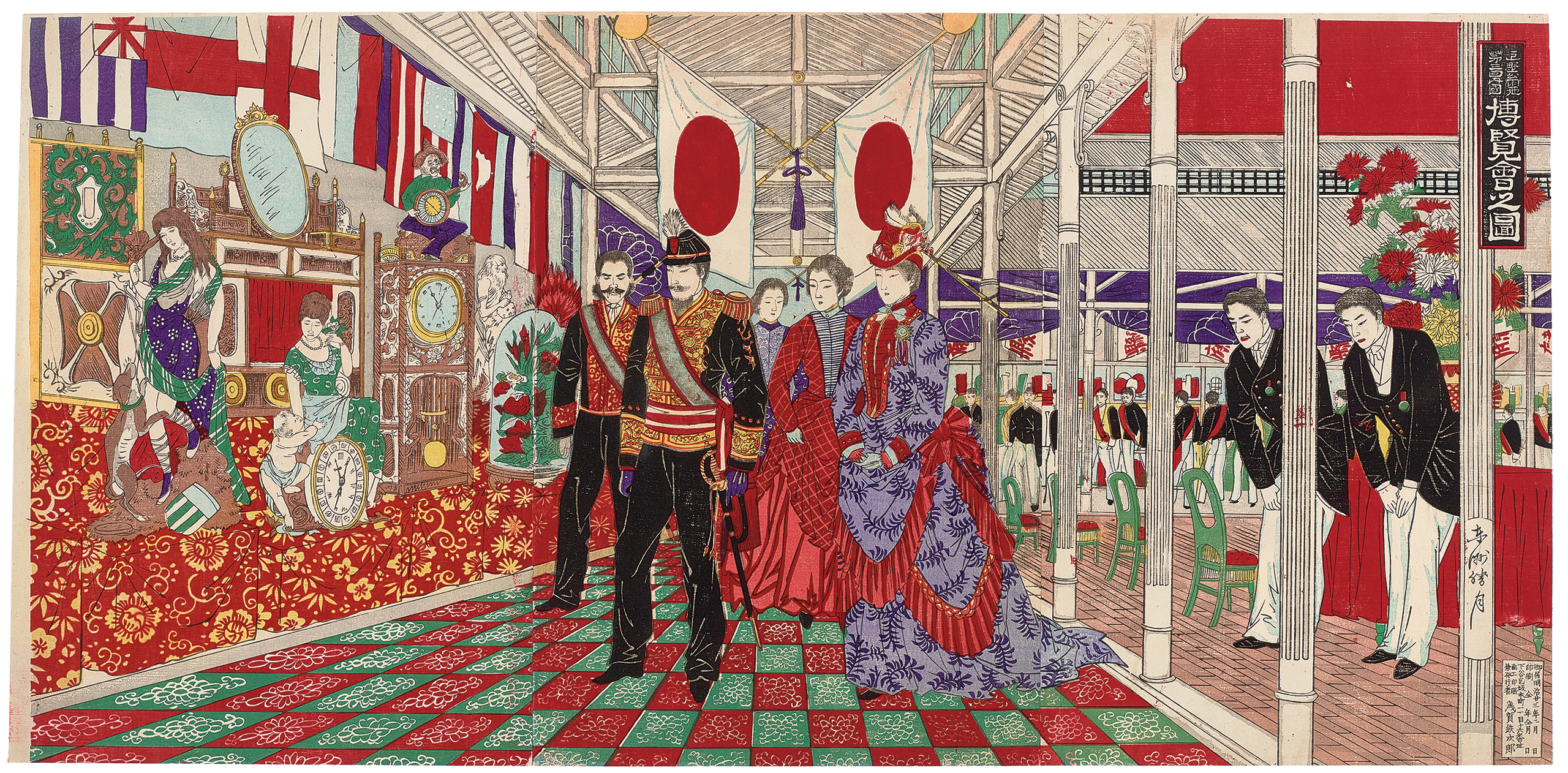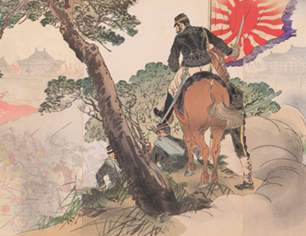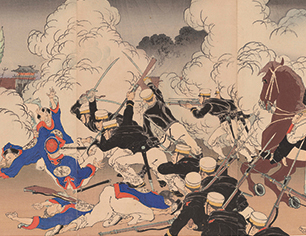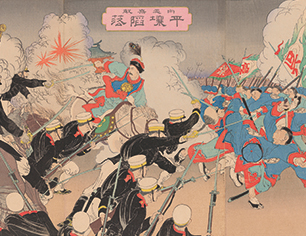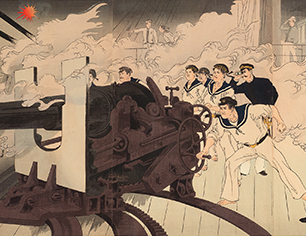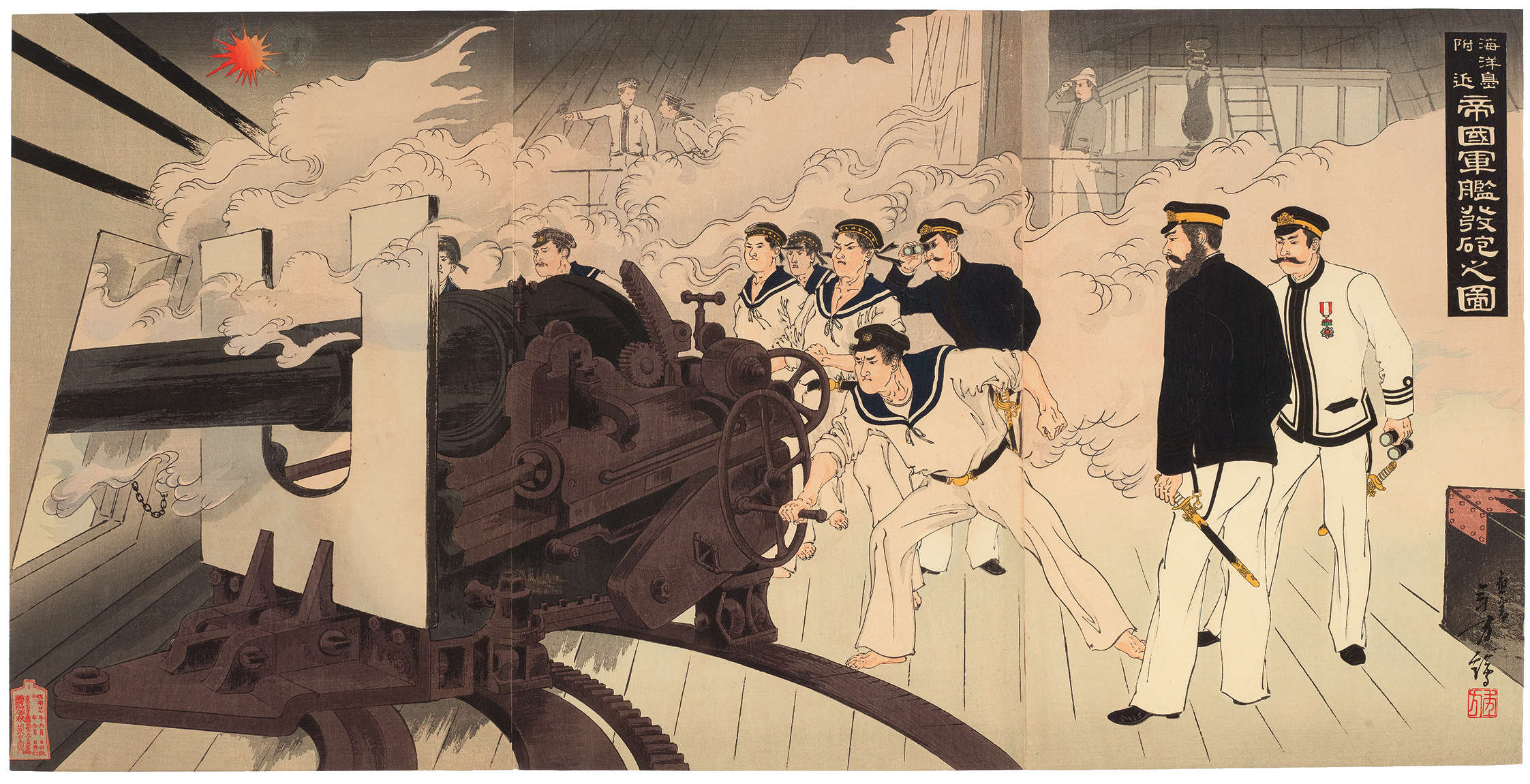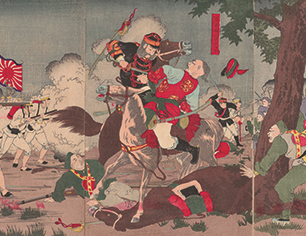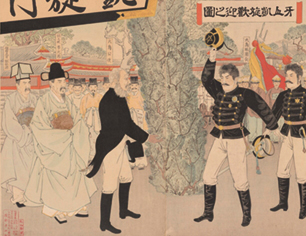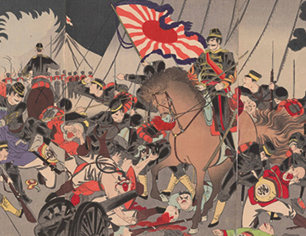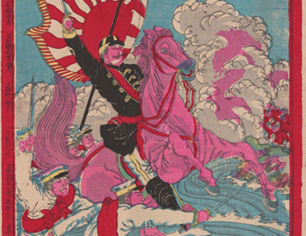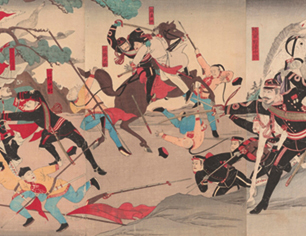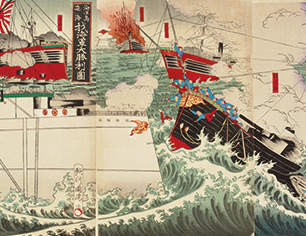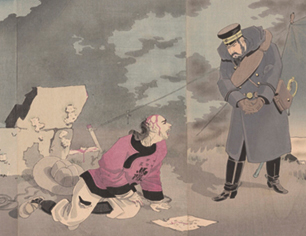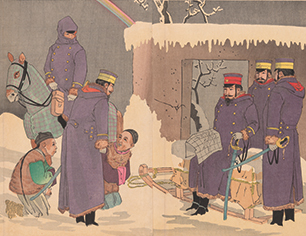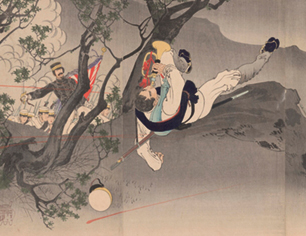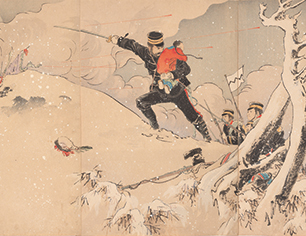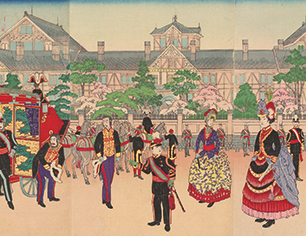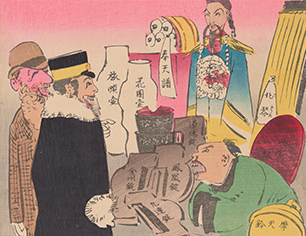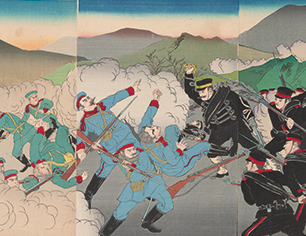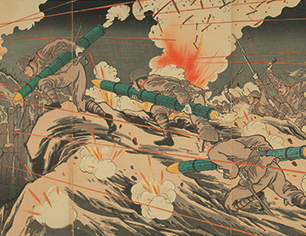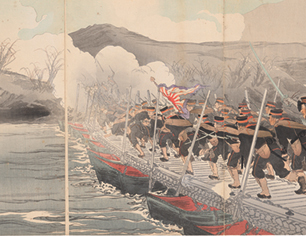Overview of the Great Japanese Navy and Army
Title - Transcribed
大日本海陸軍一覧
Title - Transliterated
Dai Nippon kai rikugun ichiran
Artist
Yamazaki (Toshinobu) Tokusaburō (1857–86)
Date
1878 April 21
Medium
Ōban triptych woodblock print
Credit
Japanese Woodblock Print Collection, Hoover Institution Archives (2019C113.001)
*BETA* Digital Record
Although the Meiji government abolished the privileges bestowed to samurai, the top 7 percent of the population, they maintained their elite status and many took on new roles in the military. Most generals and admirals of the era were former samurai. However, nine years into the Meiji era, the Satsuma Rebellion erupted as a last gasp of disenfranchised samurai trying to restore their way of life. The short-lived insurrection was portrayed by several artists in nishiki-e, including Toshinobu.
This print by Toshinobu, created less than a year after the Satsuma Rebellion, highlights some of the leaders from the conflict including the posthumous appearance of Saigō Takamori (1827–1877). Takamori had led the rebelling faction and his death ended the conflict. Yet he is honorably seated here with his Satsuma dog, Tsun, beside him—a clear sign of his continued hero status which ultimately led to his pardoning in 1889.


